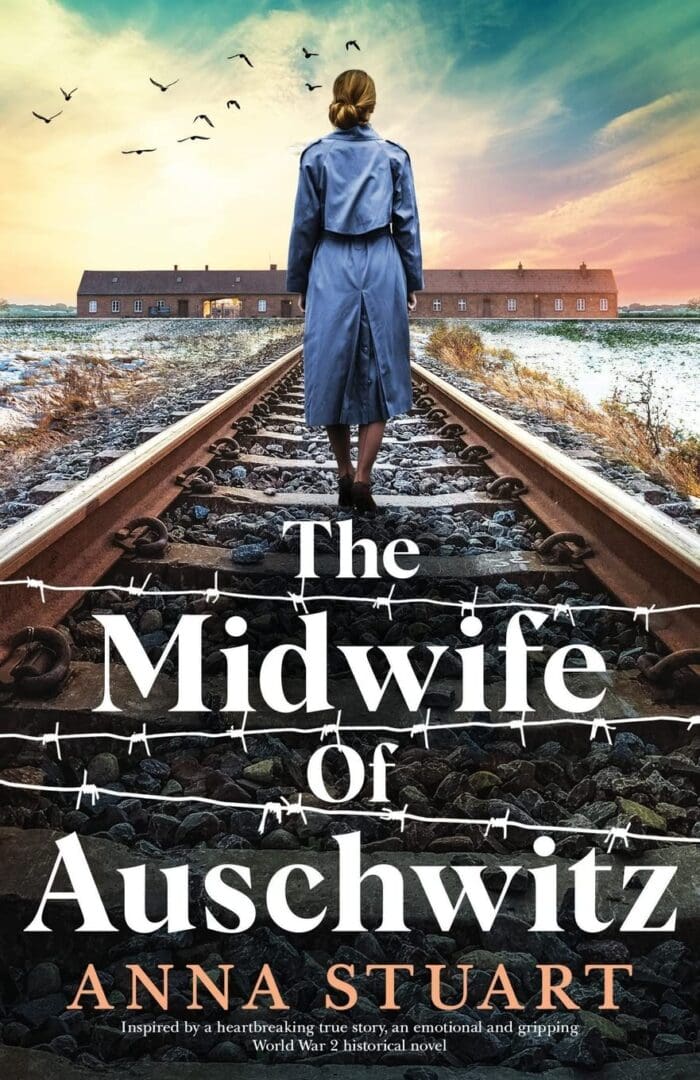
Midwife of Auschwitz
Poignant novel based on an extraordinary Polish heroine who delivered 3,000 babies in the horror of the Germans’ largest death camp. (For high school students, teachers, and adults). The Midwife of Auschwitz by Anna Stuart is a poignant historical novel based on the true-life experiences of Stanislawa (Stah-nee-swahva) Leszczynska, who trained as a midwife and was sent to the Auschwitz Birkenau extermination camp. For babies who had the misfortune of being born there, life-expectancy was grim. Many were either drowned in a bucket at birth or quickly died from starvation and prematurity. But one woman sought to defy the camp’s murderous policy by delivering as many babies as possible. When World War II broke out, the Leszczynska family was actively involved in the underground in Lodz (Woodge). Her husband, a printer, and sons prepared false documents for Polish Jews living in the German-established ghetto in Lodz, and Stanislawa distributed food for them, taking advantage of her work as a midwife to gain access to the ghetto. The family’s secret was discovered and in February 1943 the Gestapo raided their apartment, sending Leszczynska and her daughter to Auschwitz, and her two sons to the Mauthausen-Gusen concentration camp complex in Austria. Her husband managed to flee the Gestapo, only to die as an insurgent during the Warsaw Uprising in August, 1944.
Although Stanislawa (named Ana Kaminski in the novel) was accompanied to the camp by her daughter Sylwia, who was a doctor trainee that helped her deliver babies, Stanislawa’s assistant is instead portrayed by the author as Ester, a young Polish Jewish woman, who is captivated by a young Polish Jewish tailor trainee, Filip Pasternik. As the Germans invade Poland, Filip hastily asks Ester to marry him, which she does and, as the celebration is interrupted by German soldiers with orders to destroy the synagogue, Ester and Filip escape amid the chaos. They are then forced into the Lodz ghetto, during which they witness extraordinary misery under Chaim Rumkowski, the leader of the Jewish Council. Rumkowski ruled the ghetto with a strong arm surrounded by an army of Jewish Ghetto Police. His strategy was to prove to the Germans at any cost that the Jews in the Lodz Ghetto were needed to produce war goods, and that the ghetto was an excellent labor camp. The sacrifices he demanded were never enough, as evidenced by sending 15,000 “unproductive” Jewish children to the Chelmno death camp. Filip and Ester are then separated; Filip is sent to Chelmno, and Ester is sent to Auschwitz Birkenau with Ana, where both are given number tattoos. What the two discover there goes beyond any normal description of horror.
Upon arrival, most pregnant women were simply sent to the gas chambers, while others were summarily executed. The remainder were sent to hospital barracks. There, a German orderly named Sister Klara would declare every new baby as stillborn and without cutting the umbilical cord would hold the baby in a bucket of water as it kicked and screamed for the duration of its brief life, often in front of the broken mother who had just given birth. Although the rules concerning instant death were later relaxed somewhat, it was marginal. Jewish babies were still killed straight after birth and it was only non-Jewish mothers, mainly Poles and Soviet women, who were allowed to lay with their new-born babies. These babies were sentenced to a slow, cruel death by lack of food as the weakened bodies of their mothers were unable to produce milk. This brutality was countered by the love and determination of Ana and Ester, who emerged as two strong women that stood up to the Germans and carried out their undertaking unselfishly and with great love. They secretly began to tattoo the number of the mother on the newborn where it won’t be readily seen in hopes that, after the war, the child might be reunited with its mother.
The author credits Ana with successfully delivering 3,000 babies, which is the same number reported by Leszczynska. When the Soviet Army liberated the camp in January 1945, she reported that 30 babies had survived and were in the camp when it was liberated. As the war ends in May, Ester continues to search for Filip and in September, finally finds him in Lodz, this time in a city free of the brutal German occupiers.
